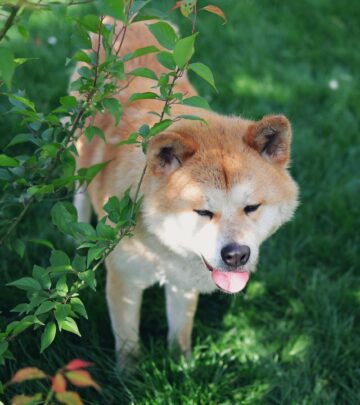How Much Sun Do Blueberries Need: Expert Guide To Optimal Growth
Discover the essential sunlight needs of blueberry plants and how to optimize growth and fruit yield in any garden.

How Much Sun Do Blueberries Need? Understanding Blueberry Sunlight Requirements
Blueberries are renowned for their delicious fruit, robust health benefits, and ornamental beauty in the garden. However, one of the most common questions from gardeners is: How much sun do blueberry bushes need to thrive? This comprehensive guide explores the optimal sunlight conditions for blueberries, how varying amounts of sun impact their growth and yield, and provides actionable tips for planting, caring for, and harvesting these versatile berry bushes.
Why Sunlight Matters for Blueberries
Sunlight plays a pivotal role in the growth, health, and fruit production of blueberry plants. Like many fruiting shrubs, blueberries convert sunlight into energy through photosynthesis, which powers everything from root development to flower and berry production. The amount of light they receive directly influences the number and quality of berries each bush will yield.
Quick Answer: Full Sun is Best
- Blueberry bushes grow best in full sun, defined as 6 to 8 hours of direct sunlight per day.
- While blueberry plants can tolerate partial shade, their growth rate, vigor, and fruit production diminish noticeably with less sun.
- For the healthiest plants and highest berry yield, always aim to provide your blueberries with as much direct sunlight as possible.
Blueberry Light Needs: Full Sun vs. Partial Shade
Let’s break down what “full sun” and “partial shade” really mean for blueberry cultivation, and what outcomes you can expect from each condition.
| Light Exposure | Plant Health | Fruit Yield | Notes |
|---|---|---|---|
| Full Sun (6–8+ hours) | Excellent vigor and robust growth | High yield; larger, sweeter berries | Ideal for all varieties |
| Partial Shade (3–5 hours) | Moderate growth; may appear spindly or stunted | Lower yield, smaller or fewer berries | Foliage may be greener, but fruit set is reduced |
| Full Shade (<3 hours) | Poor growth; possible dieback | Minimal or no fruit | Not recommended for fruit production |
How Sunlight Affects Blueberry Growth and Fruit Production
Blueberries grown in the optimal amount of sunlight (at least 6 to 8 hours daily) display more vigorous growth, thicker foliage, and higher rates of flowering. This translates to a heavier fruit set and larger, juicier berries at harvest time. In partial shade, the plants often look less vigorous, with sparser leaves and fewer blooms, which means fewer berries overall. In deeply shaded areas, blueberry plants can become weak and may eventually fail to bear fruit.
Key Benefits of Full Sun for Blueberries
- Increased Vigor: Plants direct more energy into growth and fruiting, producing denser, bushier shrubs.
- More Fruit: Full sun stimulates more blossoms, which develop into more berries.
- Sweeter Flavors: Sunlight enhances the natural sugars in the fruit, leading to sweeter, more flavorful blueberries.
- Better Resistance: Stronger, healthier plants are more resilient against pests and diseases.
Potential Drawbacks of Too Much Sun
While blueberries love sun, extreme heat, especially in arid or desert climates, can stress plants and scorch leaves. In very hot regions, providing some afternoon shade or extra mulching can help protect plants without compromising fruit yield.
Choosing the Right Planting Site
Your choice of planting location directly impacts the sunlight blueberries receive. For best results, select a site that meets these criteria:
- Wide Open Space: Avoid areas shaded by trees or buildings, as competition for light, water, and nutrients can harm blueberry growth.
- Southern or Southeastern Exposure: In the Northern Hemisphere, these exposures maximize daily sunlight.
- Well-Drained Soil: Blueberries dislike soggy feet, so plant in soil that drains well, or consider raised beds or containers.
Special Notes on Container Growing
Blueberries are excellent candidates for container gardening, which allows for easier control over sunlight exposure. Move pots to the sunniest location available, and remember to turn the pots regularly so all sides of the bush get even light.
Sunlight Needs by Blueberry Variety
While all blueberries benefit from abundant sunlight, certain varieties may tolerate partial shade better than others. Here are some popular types and their general light preferences:
- Highbush Blueberries: Thrive in full sun; most common for home gardens.
- Rabbiteye Blueberries: Prefer full sun, but can handle some partial shade in extremely hot climates.
- Lowbush Blueberries: Native to cooler regions, require full sun in northern climates but may appreciate light shade in hot areas.
Check with your local extension office or nursery for varieties best suited to your climate, and always prioritize the sunniest spot available regardless of variety.
Practical Tips for Maximizing Sunlight
- Clear Surrounding Vegetation: Prune back nearby shrubs and trees that could cast shade on your plants.
- Optimal Spacing: When planting multiple bushes, space them about 4–6 feet apart to ensure each receives ample sunlight and airflow.
- Watch Seasonal Changes: Monitor sun patterns throughout the year; what’s sunny in spring may be shaded as trees leaf out in summer.
- Use Reflective Mulch: Light-colored mulch can reflect additional sunlight onto the lower branches and fruit clusters.
What Happens If Blueberries Get Too Little Sun?
Gardening isn’t always ideal, especially in urban or wooded areas. Blueberries will grow in less than full sun, but be prepared for certain trade-offs:
- Reduced fruit quantity and quality
- Spindly, less vigorous growth
- Delayed ripening and lower overall productivity
Plants in part-shade situations may still offer an ornamental display and a modest berry harvest, but those seeking the best results should always aim for maximum sunlight.
How to Transition Blueberries to More Sun
If your existing blueberry bushes are shaded and you want to boost their productivity, consider the following steps:
- Gradual Exposure: If moving container plants, increase their time in direct sun slowly to prevent shock.
- Prune Surrounding Trees: Thin the canopy rather than removing trees outright, allowing more dappled light in over time.
- Reposition Containers in Early Spring: Take advantage of the dormant period to relocate potted plants to sunnier spots.
Maintenance Tips for Blueberries in Full Sun
Sun-loving blueberries may need a little extra care to make the most of their environment. Here are a few essentials to keep in mind:
- Watering: Blueberries require about 1–2 inches of water per week, especially when young or during hot, sunny spells. Apply water in the morning and use mulch to retain soil moisture.
- Mulching: Apply 3–4 inches of organic mulch around the base to keep roots cool, conserve moisture, and suppress weeds.
- Fertilizing: Use slow-release, acid-formulated fertilizers in spring to support steady growth. Avoid over-fertilization, which can damage roots.
- Pest & Disease Management: Healthy, sun-grown plants are less prone to problems, but always monitor for signs of disease or insect damage.
Special Considerations: Hot Climates and Shade
In extremely hot regions (such as the southwestern United States), blueberries may benefit from some afternoon shade to prevent leaf scorch and dehydration. If daytime highs routinely exceed 90°F (32°C), consider planting where the bushes will receive eastern sunlight and afternoon protection from intense western rays. You can also plant near tall annuals or in the light shade of a decently pruned tree canopy.
Common Questions About Blueberry Sunlight
Can I Grow Blueberries Without a Full Sun Location?
Yes, blueberries will grow in part shade, but be prepared for fewer berries and potentially weaker plants. Make sure they receive the sunniest possible spot you have, and meet their other basic needs regarding soil acidity and water.
Will Blueberry Bushes Survive in Full Shade?
Survival is possible but fruiting is unlikely. In heavy shade, flower and berry development are minimal, and the bushes may become sparse and leggy.
How Do I Know If My Blueberries Need More Sun?
- Pale, yellowing leaves (chlorosis)
- Poor flowering or minimal fruit set
- Stunted, slow growth
Is It Ever Possible to Give Blueberries Too Much Sun?
While rare, excessive sun combined with high temperatures and inadequate watering can stress blueberries, leading to scorched leaves and reduced vigor. In such conditions, more frequent watering and mulching, or temporary shade cloth, can help mitigate damage.
Do Younger Blueberry Plants Need Different Sun Exposure?
Young plants appreciate a bit of shade in their first season as roots establish, but by the second year they should be transitioned to full sun for best results.
Best Practices: Sunlight and the Blueberry Growing Calendar
- Spring: Plant new bushes in well-prepared, sunny sites as soon as frost risk passes.
- Summer: Monitor for heat stress and ensure consistent watering.
- Autumn: Harvest fruits, prune as needed, and remove any shading branches to prepare for next year.
- Winter: In most climates, blueberries are dormant and require little care, but monitor for broken branches or shade encroachment.
Conclusion
Blueberries are sun-loving shrubs that reward the attentive gardener with abundant crops of flavorful fruit when their sunlight needs are met. While they can tolerate some shade, aiming for at least 6–8 hours of direct sun per day is the best route to healthy, high-yield plants. Choose your planting site wisely, maintain proper care routines, and adjust for your local climate to enjoy thriving blueberry bushes season after season.
Frequently Asked Questions (FAQs)
Q: What if my garden gets only morning or afternoon sun?
A: Blueberries do well with either morning or afternoon sun, but try to maximize exposure wherever possible. Morning sun is often preferable as it helps dry dew from leaves and reduces disease risk.
Q: Can blueberries be grown indoors under grow lights?
A: Yes, with proper full-spectrum grow lights providing at least 6–8 hours of light per day, blueberries can be grown indoors, though fruit yield may be modest compared to outdoor full sun conditions.
Q: Should I prune surrounding trees to increase sunlight?
A: Yes, pruning overhanging branches can significantly improve sunlight penetration and boost blueberry growth and yield.
Q: How do I check if a spot receives enough sunlight for blueberries?
A: Use a sunlight meter or simply observe the area throughout the day at hourly intervals to add up total direct sunlight hours.
Q: Does container placement matter for sunlight?
A: Absolutely. Move containers to the sunniest spots possible, and rotate them if necessary to ensure even light exposure on all sides of the plant.
References
Read full bio of Srija Burman
















Community Experiences
Join the conversation and become a part of our empowering community! Share your stories, experiences, and insights to connect with other beauty, lifestyle, and health enthusiasts.